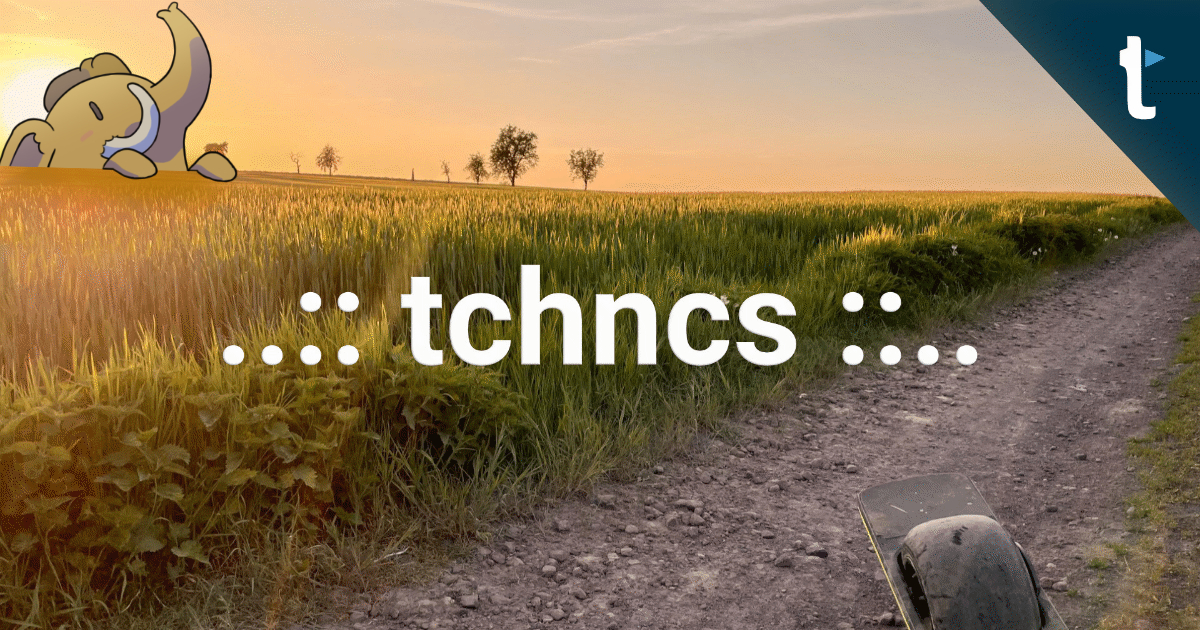Dr. Marie McNeely<p>In this new podcast episode, Dr. Jia “Leo” Li shares his research on emergent quantum phenomena in 2D materials, their thrilling recent discovery of a new type of particle, his path to becoming a successful scientist, challenges, advice, life outside the lab, and more!</p><p><a href="https://www.peoplebehindthescience.com/dr-jia-leo-li/" rel="nofollow noopener noreferrer" target="_blank"><span class="invisible">https://www.</span><span class="ellipsis">peoplebehindthescience.com/dr-</span><span class="invisible">jia-leo-li/</span></a></p><p><a href="https://qoto.org/tags/research" class="mention hashtag" rel="nofollow noopener noreferrer" target="_blank">#<span>research</span></a> <a href="https://qoto.org/tags/physics" class="mention hashtag" rel="nofollow noopener noreferrer" target="_blank">#<span>physics</span></a> <a href="https://qoto.org/tags/CondensedMatterPhysics" class="mention hashtag" rel="nofollow noopener noreferrer" target="_blank">#<span>CondensedMatterPhysics</span></a> <a href="https://qoto.org/tags/particles" class="mention hashtag" rel="nofollow noopener noreferrer" target="_blank">#<span>particles</span></a> <a href="https://qoto.org/tags/Science" class="mention hashtag" rel="nofollow noopener noreferrer" target="_blank">#<span>Science</span></a> <a href="https://qoto.org/tags/STEM" class="mention hashtag" rel="nofollow noopener noreferrer" target="_blank">#<span>STEM</span></a> <a href="https://qoto.org/tags/podcast" class="mention hashtag" rel="nofollow noopener noreferrer" target="_blank">#<span>podcast</span></a> <a href="https://qoto.org/tags/sciencecommunication" class="mention hashtag" rel="nofollow noopener noreferrer" target="_blank">#<span>sciencecommunication</span></a> <a href="https://qoto.org/tags/scicomm" class="mention hashtag" rel="nofollow noopener noreferrer" target="_blank">#<span>scicomm</span></a></p>
Recent searches
No recent searches
Search options
Only available when logged in.
social.tchncs.de is one of the many independent Mastodon servers you can use to participate in the fediverse.

A friendly server from Germany – which tends to attract techy people, but welcomes everybody. This is one of the oldest Mastodon instances.
Administered by:
Server stats:
3.8Kactive users
social.tchncs.de: About · Profiles directory · Privacy policy
Mastodon: About · Get the app · Keyboard shortcuts · View source code · v4.3.7
#CondensedMatterPhysics
0 posts · 0 participants · 0 posts today
Colin the Mathmo<p>I have a favour to ask of a condensed matter physicist on behalf of a friend.</p><p>If you class yourself as a "condensed matter physicist", or "condensed matter physics adjacent", would you mind giving me a ping?</p><p>Thanks.</p><p>(PS: Please boost for reach ... much obliged)</p><p><a href="https://mathstodon.xyz/tags/Physics" class="mention hashtag" rel="nofollow noopener noreferrer" target="_blank">#<span>Physics</span></a> <a href="https://mathstodon.xyz/tags/CondensedMatterPhysics" class="mention hashtag" rel="nofollow noopener noreferrer" target="_blank">#<span>CondensedMatterPhysics</span></a></p>
philjreese<p>🔬In leap forward for <a href="https://mstdn.party/tags/condensedmatterphysics" class="mention hashtag" rel="nofollow noopener noreferrer" target="_blank">#<span>condensedmatterphysics</span></a>, researchers reporting new <a href="https://mstdn.party/tags/magnetic" class="mention hashtag" rel="nofollow noopener noreferrer" target="_blank">#<span>magnetic</span></a> phase called <a href="https://mstdn.party/tags/altermagnetism" class="mention hashtag" rel="nofollow noopener noreferrer" target="_blank">#<span>altermagnetism</span></a>, 🧲 potentially revolutionizing <a href="https://mstdn.party/tags/electronics" class="mention hashtag" rel="nofollow noopener noreferrer" target="_blank">#<span>electronics</span></a> 💻📱by significantly increasing speed & energy efficiency while reducing <a href="https://mstdn.party/tags/environmental" class="mention hashtag" rel="nofollow noopener noreferrer" target="_blank">#<span>environmental</span></a> impact. <a href="https://mstdn.party/tags/science" class="mention hashtag" rel="nofollow noopener noreferrer" target="_blank">#<span>science</span></a> <a href="https://mstdn.party/tags/tech" class="mention hashtag" rel="nofollow noopener noreferrer" target="_blank">#<span>tech</span></a></p><p><a href="https://thedebrief.org/researchers-uncover-new-class-of-magnetism-that-could-revolutionize-digital-devices/" rel="nofollow noopener noreferrer" translate="no" target="_blank"><span class="invisible">https://</span><span class="ellipsis">thedebrief.org/researchers-unc</span><span class="invisible">over-new-class-of-magnetism-that-could-revolutionize-digital-devices/</span></a></p>
Enabla<p>If you're interested in Anderson localization or random quantum circuits, don't miss the opportunity to discuss it with Prof. John Chalker from the University of Oxford, Department of Physics online under his new Enabla lecture here: <a href="https://enabla.com/pub/942/about" rel="nofollow noopener noreferrer" translate="no" target="_blank"><span class="invisible">https://</span><span class="">enabla.com/pub/942/about</span><span class="invisible"></span></a></p><p>Prof. Chalker's introductory lecture covers topics such as the random matrix theory of Gaussian Wigner-Dyson ensembles, Anderson localisation with one-parameter scaling, and random quantum circuits. The focus is on the spectral form factor, entanglement entropy, and out-of-time-ordered correlators.</p><p><a href="https://mathstodon.xyz/tags/CondensedMatterPhysics" class="mention hashtag" rel="nofollow noopener noreferrer" target="_blank">#<span>CondensedMatterPhysics</span></a> <a href="https://mathstodon.xyz/tags/QuantumPhysics" class="mention hashtag" rel="nofollow noopener noreferrer" target="_blank">#<span>QuantumPhysics</span></a> <a href="https://mathstodon.xyz/tags/RandomMatrices" class="mention hashtag" rel="nofollow noopener noreferrer" target="_blank">#<span>RandomMatrices</span></a> <a href="https://mathstodon.xyz/tags/AndersonLocalization" class="mention hashtag" rel="nofollow noopener noreferrer" target="_blank">#<span>AndersonLocalization</span></a> <a href="https://mathstodon.xyz/tags/OpenAccess" class="mention hashtag" rel="nofollow noopener noreferrer" target="_blank">#<span>OpenAccess</span></a> <a href="https://mathstodon.xyz/tags/QuantumCircuits" class="mention hashtag" rel="nofollow noopener noreferrer" target="_blank">#<span>QuantumCircuits</span></a></p>
CCochard<p>Just finished a call where the concept of data paper was mentionned.</p><p>Any information about it?</p><p>Recommendation for journals that would accept them in condensed matter physics are welcome!</p><p><a href="https://social.sciences.re/tags/OpenData" class="mention hashtag" rel="nofollow noopener noreferrer" target="_blank">#<span>OpenData</span></a> <a href="https://social.sciences.re/tags/OpenScience" class="mention hashtag" rel="nofollow noopener noreferrer" target="_blank">#<span>OpenScience</span></a> <a href="https://social.sciences.re/tags/CondensedMatterPhysics" class="mention hashtag" rel="nofollow noopener noreferrer" target="_blank">#<span>CondensedMatterPhysics</span></a> <a href="https://social.sciences.re/tags/physics" class="mention hashtag" rel="nofollow noopener noreferrer" target="_blank">#<span>physics</span></a> <a href="https://social.sciences.re/tags/AcademicChatter" class="mention hashtag" rel="nofollow noopener noreferrer" target="_blank">#<span>AcademicChatter</span></a></p>
Hari Tulsidas<p>A five-lane superhighway for electrons has been created, paving the way for ultra-efficient electronics. This groundbreaking discovery is one of several significant advancements in condensed matter physics.</p><p><a href="https://masto.ai/tags/CondensedMatterPhysics" class="mention hashtag" rel="nofollow noopener noreferrer" target="_blank">#<span>CondensedMatterPhysics</span></a></p><p><a href="https://phys.org/news/2024-05-physicists-lane-superhighway-electrons.html" rel="nofollow noopener noreferrer" translate="no" target="_blank"><span class="invisible">https://</span><span class="ellipsis">phys.org/news/2024-05-physicis</span><span class="invisible">ts-lane-superhighway-electrons.html</span></a></p>
Snowshadow 🇨🇦<p>Meet Strange Metals: Where Electricity May Flow Without Electrons</p><p>"The unusual flow of electric current through a strange class of metals challenges our textbook understanding of charge-carrying particles — because whatever is shuttling current through these metals looks nothing like electrons."</p><p><a href="https://mastodon.social/tags/physics" class="mention hashtag" rel="nofollow noopener noreferrer" target="_blank">#<span>physics</span></a> <a href="https://mastodon.social/tags/condensedmatterphysics" class="mention hashtag" rel="nofollow noopener noreferrer" target="_blank">#<span>condensedmatterphysics</span></a> <a href="https://mastodon.social/tags/materialsscience" class="mention hashtag" rel="nofollow noopener noreferrer" target="_blank">#<span>materialsscience</span></a> <a href="https://mastodon.social/tags/quasiparticles" class="mention hashtag" rel="nofollow noopener noreferrer" target="_blank">#<span>quasiparticles</span></a> <a href="https://mastodon.social/tags/science" class="mention hashtag" rel="nofollow noopener noreferrer" target="_blank">#<span>science</span></a> </p><p><a href="https://www.quantamagazine.org/meet-strange-metals-where-electricity-may-flow-without-electrons-20231127/?mc_cid=3a7c726c9f" rel="nofollow noopener noreferrer" translate="no" target="_blank"><span class="invisible">https://www.</span><span class="ellipsis">quantamagazine.org/meet-strang</span><span class="invisible">e-metals-where-electricity-may-flow-without-electrons-20231127/?mc_cid=3a7c726c9f</span></a></p>
IT News<p>Scientists figured out how to write in water - Enlarge / A selection of images drawn in water (linear scales: 250 µm) ... - <a href="https://arstechnica.com/?p=1966985" rel="nofollow noopener noreferrer" target="_blank"><span class="invisible">https://</span><span class="">arstechnica.com/?p=1966985</span><span class="invisible"></span></a> <a href="https://schleuss.online/tags/condensedmatterphysics" class="mention hashtag" rel="nofollow noopener noreferrer" target="_blank">#<span>condensedmatterphysics</span></a> <a href="https://schleuss.online/tags/ionexchangebeads" class="mention hashtag" rel="nofollow noopener noreferrer" target="_blank">#<span>ionexchangebeads</span></a> <a href="https://schleuss.online/tags/fluiddynamics" class="mention hashtag" rel="nofollow noopener noreferrer" target="_blank">#<span>fluiddynamics</span></a> <a href="https://schleuss.online/tags/science" class="mention hashtag" rel="nofollow noopener noreferrer" target="_blank">#<span>science</span></a> <a href="https://schleuss.online/tags/physics" class="mention hashtag" rel="nofollow noopener noreferrer" target="_blank">#<span>physics</span></a></p>
Victoria Stuart 🇨🇦 🏳️⚧️<p>Pines' Demon: Physicists confirm 1956 prediction of massless, neutral composite particle<br><a href="https://www.sciencedaily.com/releases/2023/08/230818004752.htm" rel="nofollow noopener noreferrer" translate="no" target="_blank"><span class="invisible">https://www.</span><span class="ellipsis">sciencedaily.com/releases/2023</span><span class="invisible">/08/230818004752.htm</span></a><br>Discussion: <a href="https://www.sciencedaily.com/releases/2023/08/230818004752.htm" rel="nofollow noopener noreferrer" translate="no" target="_blank"><span class="invisible">https://www.</span><span class="ellipsis">sciencedaily.com/releases/2023</span><span class="invisible">/08/230818004752.htm</span></a></p><p>Pines’ demon observed as 3D acoustic plasmon in Sr2RuO4<br><a href="https://www.nature.com/articles/s41586-023-06318-8" rel="nofollow noopener noreferrer" translate="no" target="_blank"><span class="invisible">https://www.</span><span class="ellipsis">nature.com/articles/s41586-023</span><span class="invisible">-06318-8</span></a></p><p>Pines' demon: <a href="https://en.wikipedia.org/wiki/Pines%27_demon" rel="nofollow noopener noreferrer" translate="no" target="_blank"><span class="invisible">https://</span><span class="ellipsis">en.wikipedia.org/wiki/Pines%27</span><span class="invisible">_demon</span></a><br>* condensed matter physics<br>* quant. mech. excited states<br>* collective excitation of e- in different/out of phase energy bands<br>* collective excitations: magnon, phason, exciton</p><p><a href="https://mastodon.social/tags/physics" class="mention hashtag" rel="nofollow noopener noreferrer" target="_blank">#<span>physics</span></a> <a href="https://mastodon.social/tags/CondensedMatterPhysics" class="mention hashtag" rel="nofollow noopener noreferrer" target="_blank">#<span>CondensedMatterPhysics</span></a> <a href="https://mastodon.social/tags/PinesDemon" class="mention hashtag" rel="nofollow noopener noreferrer" target="_blank">#<span>PinesDemon</span></a> <a href="https://mastodon.social/tags/plasmon" class="mention hashtag" rel="nofollow noopener noreferrer" target="_blank">#<span>plasmon</span></a></p>
Max Headroom<p>There's a related question I've struggled with - maybe you can help: How can one efficiently normalize a multi-fermion wave function composed of a determinant of single particle orbitals which are not orthogonal to each other?</p><p><a href="https://qoto.org/tags/quantumchemistry" class="mention hashtag" rel="nofollow noopener noreferrer" target="_blank">#<span>quantumchemistry</span></a> <a href="https://qoto.org/tags/CondensedMatterPhysics" class="mention hashtag" rel="nofollow noopener noreferrer" target="_blank">#<span>CondensedMatterPhysics</span></a><br><a href="https://qoto.org/tags/physics" class="mention hashtag" rel="nofollow noopener noreferrer" target="_blank">#<span>physics</span></a></p>
ExploreLive feeds
Mastodon is the best way to keep up with what's happening.
Follow anyone across the fediverse and see it all in chronological order. No algorithms, ads, or clickbait in sight.
Create accountLoginDrag & drop to upload
